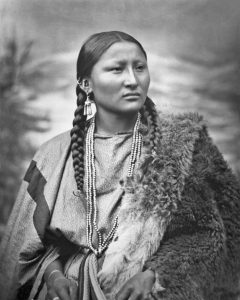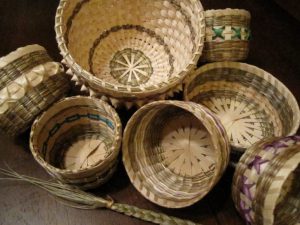Many of us have family lore about an elusive Native ancestor somewhere far back on our family tree. Over the past year in Research Services we have received about a dozen formal requests to search for a Native ancestor and other inquiries over the phone. Often these requests are based on stories passed down through the generations or when DNA results display some Native American ancestry in an autosomal test.
As someone with a background in American Indian studies who has worked with Native nations in both New York and Arizona, I often struggle with how to respond to these inquiries in a meaningful way that is both respectful of living Native communities and to the individuals seeking information on whether or not their ancestors were a part of that history. Therefore, I have compiled a few things to consider before you start digging for your Native roots.
Consider your intentions
First, consider your intentions. The desire to identify and document your ancestors’ past is the goal of any genealogist, especially when the goal is to prove a family story. However, you should be prepared to accept the (probable) possibility that your lore about a Native Ancestor is not accurate, as is the case with most with these stories.
Second, take an autosomal DNA test. If Native American ancestry is present in your results, it gives you a good indication that you have a native ancestor somewhere in the last 5–7 generations of your ancestry. This means that your research would be worth pursuing, since you may be able to locate a record that could identify your ancestor as American Indian. If your results present no American Indian DNA, you likely do not have a Native ancestor, or it is so many generations removed from you that you are probably not going to find documentation of it. A DNA test is a good starting point to either prove or deny your family lore without you having to do much searching.
If your DNA test is positive and you would like to begin your search, I would again suggest considering your intentions. In most cases, having Native American DNA show up in an autosomal test will not be enough for membership in a tribe. The DNA also will not tell you to which Native Nation your ancestors belonged. If your goal is legal recognition in a tribe, you will need to contact that nation specifically to determine their requirements for membership.
During my tenure in Research Services I have worked on a number of cases where we were able to locate a recent ancestor on the rolls to assist with proof for membership into a few different tribes. In my experience, these ancestors were the clients’ grandparents or great-grandparents, and the clients had multiple relatives who were enrolled members of tribes. In other instances, we were able to identify more distant relatives who lived before any roll existed, but they are identified as being Native in a variety of records. It is not an impossible task to identify these relatives if they exist, though it may require some more creative searching methods.
Native nations are contemporary thriving cultures…
Finally, throughout your research I would encourage you to recognize that Native nations are contemporary thriving cultures and, in most cases, having a Native ancestor many generations back is not the same as being Native.
Each nation has its own guidelines for membership in the tribe. Therefore, if your ancestor does not meet the qualifications for membership with a tribe, you can say that you have Native ancestry, but you yourself are not Native.[1] Perhaps another example of this concept is: I have German ancestry, but I am not German. This does not mean that you should not be proud of your Native ancestor/s, but merely a friendly reminder to recognize it as part of your family’s history rather than a contemporary identity.
Note
[1] Recognition in a tribe is not always a black or white issue and there are exceptions to this rule, such as instances where one is raised in the culture or on a reservation but does not have other requirements for membership such as a blood-quantum requirement. This statement is not speaking to those circumstances.
Share this:
About Meaghan E.H. Siekman
Meaghan holds a Ph.D. in history from Arizona State University where her focus was public history and American Indian history. She earned her B.A. in history from Union College in Schenectady, New York, the city where she grew up. Prior to joining the NEHGS team, Meaghan worked as the Curator of the Fairbanks House in Dedham, Massachusetts, as an archivist at the Heard Museum Library in Phoenix, Arizona, and wrote a number of National Register Nominations and Cultural Landscape Inventories for the National Park Service. Meaghan is passionate about connecting people with the past in meaningful and lasting ways. She enjoys finding interesting anecdotes about an ancestor to help bring the past to life.View all posts by Meaghan E.H. Siekman →

